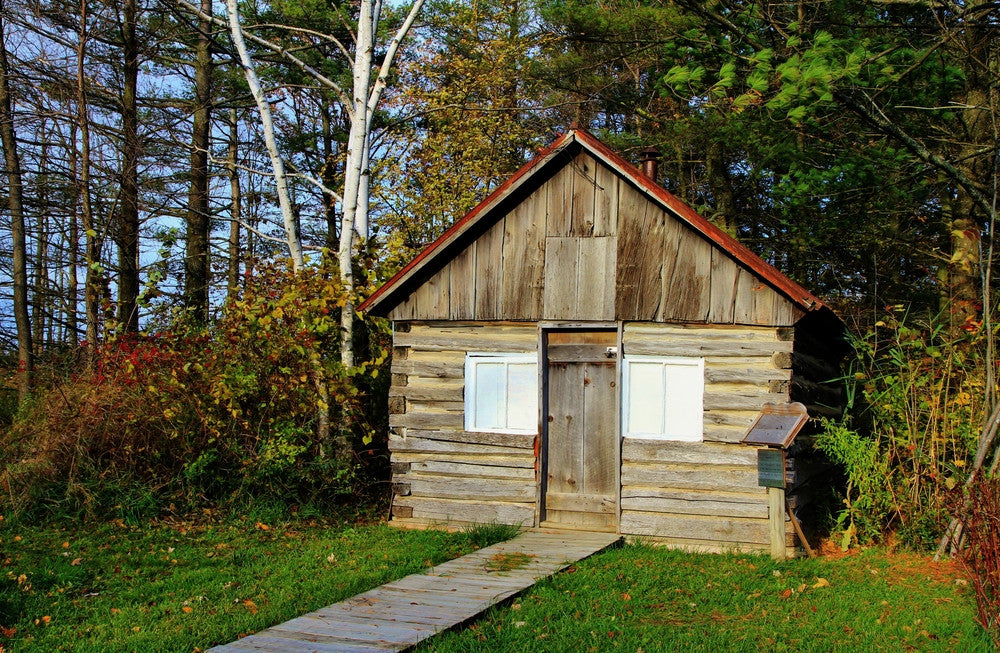5 of the Oldest Log Cabins in America

It’s believed that the first log cabins in the United States were built nearly 400 years ago.
Although the history of our nation is short, log cabins were there from the start.
Today, log cabins have become more modern — functional and fashionable, instead of purely functional like their predecessors.
Though our log cabins today have more amenities, it’s still fun to look back on the oldest log cabins in America to realize just how far they’ve truly come.
C.A. Nothnagle Log House (Braman-Nothnagle Log House)
Year built: 1638–1643
This historic house located in Greenwich Township, New Jersey, is regarded as one of the oldest log homes in the United States. It opened officially in 1685, though it was built by Finnish settlers between 1638 and 1643. In 1976, it was officially put on the National Register of Historic Places (NHRP).
Originally used as a place to make dairy products and butcher meat, the log cabin has retained all but one of its original logs.
Today, Harry and Doris Rink own and maintain the cabin. Harry is the only individual who makes restoration updates and repairs — with clay dug up from a nearby farm. It’s open to the public, and admission is free.
Lower Swedish Cabin
Year built: 1640–1650
Just outside Philadelphia and not far from the Garden State, Lower Swedish Cabin stands two stories tall. The log cabin, located in next to Darby Creek in Drexel Hill, Pennsylvania, was built in a Swedish style by immigrant in the New Sweden colony. It joined the list of NHRP in 1980.
The log cabin was built as a trading post for the Swedish and Native Americans. Over the years, it was used by various groups of settlers for different purposes. It was later turned into a private residence until 1937, when it became property of Upper Darby Township.
In the 1900s, the log cabin was vandalized. Later, the government stepped in and restored the historic landmark. Visitors still come to the log cabin today.
Edward Morgan Log House
Year built: early 1700s
Another Pennsylvania log cabin is the Morgan Log House, sitting in Kulpsville, an easy drive north of Philadelphia. Built in the early 1700s in a medieval Germanic style, the log cabin earned its spot on the NHRP in 1973.
It is believed that Edward Morgan, a Welsh Quaker settler, built the home. The property changed hands many times over the years, eventually landing in the Cassel family for almost a century. It was abandoned in 1965 and condemned two years later.
Today, it is a tourist destination. The Morgan Log House offers tours, organizes community events and accepts volunteers to contribute to the preservation of this historic site.
Molalla Log House
Year built: late 1700s or early 1800s
On the opposite coast of the country, the Molalla Log House is perched in Clackamas County, Oregon. Historians believe the log house is from before Lewis and Clark, dating it back as far as the late 1700s, though the true timeline is unconfirmed.
The simple structure, also known as the Fox Granary, sits 17 Douglas fir logs high (each 25 feet in length). The craftsmanship was so skilled, no chinking was needed to fill in gaps of the perfectly stacked logs. It was built unlike traditional pioneer Oregon structures, thus experts believe it to have been from foreign settlers.
In 2008, the log cabin was dismantled and relocated to a nearby warehouse to avoid complete deterioration and begin the restoration process.
Bellevue Log Cabin
Year built: 1835
Located in Bellevue, Nebraska, the unusually named Bellevue Log Cabin is believed to be the oldest building in the state. Built around 1835 in the Mississippi River floodplains, the cabin was used as a fur trading post. The Bellevue Log Cabin was included on the NHRP in 1970.
A cholera outbreak drove settlers to move the cabin further from the river, though 15 years later, it was moved back to its original — and present — location. Since then, the cabin has changed hands several times, and it was once purchased for a whole $10.
The log cabin, made of 12-inch-thick cottonwood logs and Indian lodge pole-style rafters, doubled in size over the years. Restoration projects began in 1950 — replacing rotted logs, structural reinforcement, a new basement, replaced roofs — and has been restored to near-original condition. Today, tours can be arranged by appointment.
